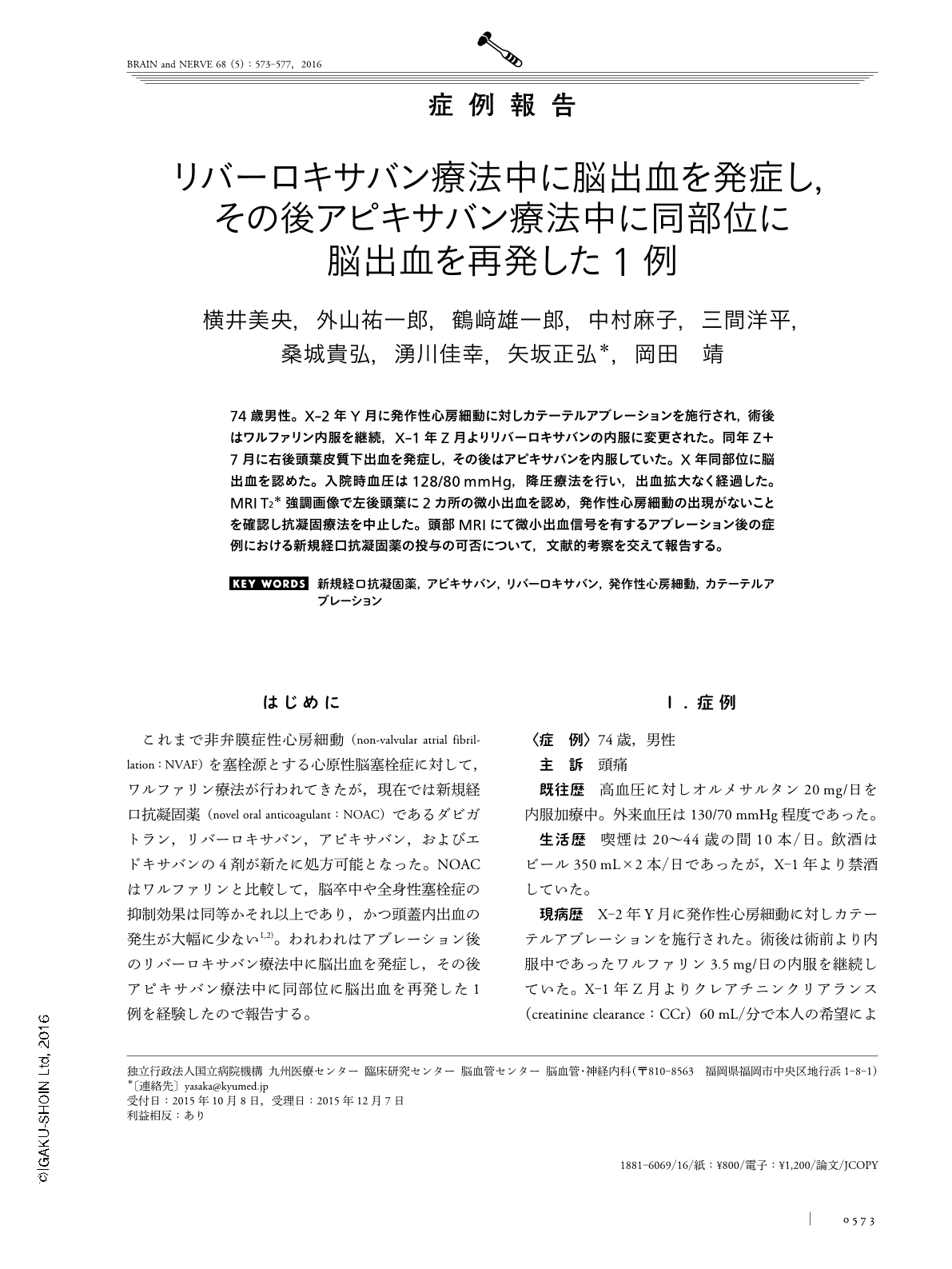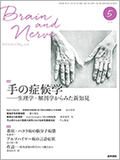Japanese
English
- 有料閲覧
- Abstract 文献概要
- 1ページ目 Look Inside
- 参考文献 Reference
74歳男性。X-2年Y月に発作性心房細動に対しカテーテルアブレーションを施行され,術後はワルファリン内服を継続,X-1年Z月よりリバーロキサバンの内服に変更された。同年Z+7月に右後頭葉皮質下出血を発症し,その後はアピキサバンを内服していた。X年同部位に脳出血を認めた。入院時血圧は128/80mmHg,降圧療法を行い,出血拡大なく経過した。MRI T2*強調画像で左後頭葉に2カ所の微小出血を認め,発作性心房細動の出現がないことを確認し抗凝固療法を中止した。頭部MRIにて微小出血信号を有するアブレーション後の症例における新規経口抗凝固薬の投与の可否について,文献的考察を交えて報告する。
Abstract
We report a case of repeated cerebral hemorrhage associated with administration of rivaroxaban and apixaban. A 74-year-old man had undergone catheter ablation for non-valvular paroxysmal atrial fibrillation in 2 years prior. Warfarin treatment was continued after successful catheter ablation, and was then changed to rivaroxaban in 1 year prior. Three months later, he developed subcortical cerebral hemorrhage in the right occipital lobe and pharmacotherapy was changed to apixaban. At the current presentation, he complained of headache and left visual field defect, and was admitted to our hospital. Computed tomography of the head revealed recurrent hematoma at the same site as the previous hemorrhagic lesion. Administration of apixaban was subsequently stopped. Magnetic resonance imaging of the head revealed no vascular anomalies around the hemorrhagic lesion, except for two microbleeds in the left cerebral cortex, suggesting amyloid angiopathy. We report the current case from the perspective of whether anticoagulation should be continued after successful catheter ablation, and whether anticoagulation is appropriate in patients with microbleed signals in the cerebral cortex.
(Received October 8, 2015; Accepted December 7, 2015; Published May 1, 2016)

Copyright © 2016, Igaku-Shoin Ltd. All rights reserved.


